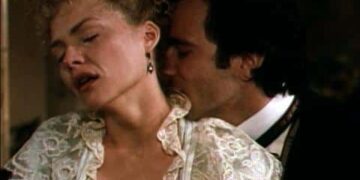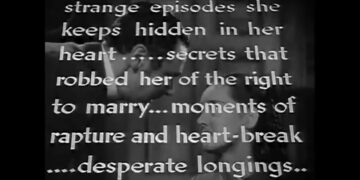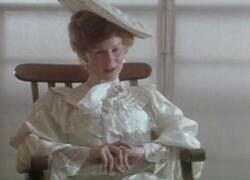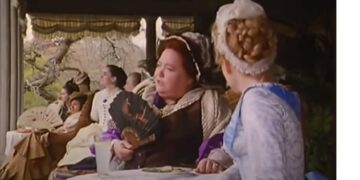Edith Wharton, born Edith Newbold Jones on January 24, 1862, in New York City, was a renowned American author and one of the most influential writers of the early 20th century. She was the first woman to win the Pulitzer Prize for her novel “The Age of Innocence” in 1921, solidifying her place in literary history. Wharton’s writing style was characterized by her keen observation of society and her ability to capture the complexities of human relationships. Her works often explored themes of love, marriage, and the constraints of social conventions.
Edith Wharton’s Early Life: Exploring her upbringing, education, and early influences
Edith Wharton was born into a wealthy and privileged family. Her parents, George Frederic Jones and Lucretia Rhinelander Jones, belonged to the elite social circles of New York. Growing up, Wharton received a private education and was exposed to the finest literature and art. Her family’s extensive travels throughout Europe also played a significant role in shaping her world view and literary aspirations.
Despite her privileged upbringing, Wharton’s childhood was not without challenges. She struggled with a sense of isolation and felt restricted by the rigid expectations placed upon her as a young woman of her social status. These early experiences would later inform her writing, as she explored the complexities of gender roles and societal expectations in her novels.
Edith Wharton’s Writing Career: A look at her literary works, including her first and last books
Wharton began her writing career in her late thirties, publishing her first book, “The Decoration of Houses,” in 1897. This collaborative work with architect Ogden Codman Jr. showcased her expertise in interior design and marked the beginning of her literary success. However, it was her novels that truly established her as a literary force to be reckoned with.
Her breakthrough novel, “The House of Mirth,” published in 1905, garnered critical acclaim and solidified her reputation as a skilled social commentator. Wharton continued to produce a series of remarkable novels, including “Ethan Frome,” “The Custom of the Country,” and “The Age of Innocence,” which won her the Pulitzer Prize. Her final novel, “The Buccaneers,” was published posthumously in 1938, further cementing her literary legacy.
Edith Wharton’s Impact on Media: Examining the screen adaptation of her popular novel, Ethan Frome, and other artists she inspired
Wharton’s influence extended beyond the realm of literature. Her novels have been adapted into numerous film and television adaptations, bringing her stories to a wider audience. One notable adaptation is the 1993 film “The Age of Innocence,” directed by Martin Scorsese and starring Michelle Pfeiffer, Daniel Day-Lewis, and Winona Ryder. The film beautifully captured the opulence and constraints of New York society in the late 19th century, staying true to Wharton’s original vision.
Furthermore, Wharton’s works continue to inspire artists in various mediums. Her sharp social commentary and exploration of human relationships resonate with contemporary writers, filmmakers, and artists. Authors such as Zadie Smith and Donna Tartt have cited Wharton as a source of inspiration, acknowledging her mastery of storytelling and character development.
Edith Wharton’s Love Life and Friendships: Delving into her relationships and how they influenced her writing
Wharton’s personal life was as intriguing as her novels. She married Edward “Teddy” Wharton, a wealthy Boston banker, in 1885. However, their marriage was not a happy one, and they eventually divorced in 1913. Wharton’s relationships and friendships played a significant role in shaping her worldview and influencing her writing.
One of her closest friends was writer Henry James, with whom she had a complex and intellectually stimulating relationship. They exchanged letters and engaged in deep discussions about literature and life. Wharton’s close friendship with James provided her with a supportive and intellectually stimulating environment, fueling her creative endeavors.
Additionally, Wharton’s love affair with journalist Morton Fullerton, which began in 1907, brought both happiness and heartache. This tumultuous relationship inspired her novel “The Reef” and showcased her ability to delve into the complexities of love and desire.
Edith Wharton’s Social Standing: Discussing her experiences and observations of the rich and poor in society
Wharton’s privileged background provided her with a unique perspective on the stark divide between the rich and the poor. Through her novels, she explored the lives of both the wealthy elite and those struggling to make ends meet. Wharton’s keen observations of social class and the impact of wealth on individuals’ lives added depth and realism to her narratives.
Her novel “The House of Mirth” is a prime example of her examination of social standing. The protagonist, Lily Bart, is a young woman trapped in a world of opulence and social expectations. As the story unfolds, Wharton exposes the limitations and pressures faced by individuals striving to maintain their social status.
Edith Wharton’s Use of Backbiting and Gossip: Analyzing the themes of criticism and gossip in her works
Criticism and gossip are recurring themes in Wharton’s novels. She masterfully portrays the destructive power of rumors and the impact they can have on individuals and society as a whole. In “The Age of Innocence,” for example, the characters navigate a world governed by societal expectations and the fear of scandal. Wharton’s exploration of gossip sheds light on the constraints faced by individuals who dare to challenge social norms.
The prevalence of backbiting and gossip in Wharton’s works serves as a critique of the superficiality and judgmental nature of society. Through her characters, she exposes the hypocrisy and cruelty that can arise from idle chatter, highlighting the need for genuine human connection and understanding.
Edith Wharton’s Best Quotes: Highlighting some of her most memorable and insightful quotes
Wharton’s writing is filled with memorable and insightful quotes that capture the essence of her observations on society, love, and human nature. Here are just a few examples:
- “There are two ways of spreading light: to be the candle or the mirror that reflects it.”
- “The real marriage of true minds is for any two people to possess a sense of humor or irony pitched in exactly the same key, so that their joint glances on any subject cross like interarching searchlights.”
- “There are moments when a man’s imagination, so easily subdued to what it lives in, suddenly rises above its daily level and surveys the long windings of destiny.”
These quotes not only showcase Wharton’s eloquence and mastery of language but also provide a glimpse into the depth of her insights into human nature and society.
Exploring the Settings of Edith Wharton’s Books: Examining the main places where her stories are set
Wharton’s novels are often set in opulent and affluent environments, such as the New York City of the Gilded Age. She expertly captures the atmosphere and intricacies of these settings, transporting readers to a different time and place. From the grand mansions of Fifth Avenue to the picturesque landscapes of New England, Wharton’s descriptions create a vivid backdrop for her characters’ lives.
One of the most iconic settings in Wharton’s works is the fictional Starkfield, Massachusetts, portrayed in her novel “Ethan Frome.” The small, isolated town serves as a metaphor for the characters’ entrapment and the limitations imposed by societal expectations. Wharton’s ability to evoke a sense of place adds depth and richness to her narratives, making her books a delight to read.
Must-Read Books by Edith Wharton: Recommending some of her best works for readers
If you’re new to Edith Wharton’s works and wondering where to start, here are some must-read books that showcase her talent and provide a comprehensive understanding of her literary contributions:
- “The House of Mirth” – A tragic tale of a young woman’s struggle for social acceptance and love in New York’s high society.
- “The Age of Innocence” – A Pulitzer Prize-winning novel that explores the clash between desire and societal expectations in 1870s New York.
- “Ethan Frome” – A haunting story of forbidden love and sacrifice set in the wintry landscapes of New England.
- “The Custom of the Country” – A scathing critique of American society through the ambitious and morally ambiguous character of Undine Spragg.
- “The Reef” – A tale of love, betrayal, and the complexities of relationships set against the backdrop of Europe.
These books showcase the breadth and depth of Wharton’s storytelling abilities and provide a captivating reading experience for both new and seasoned readers.
Conclusion: Reflecting on the enduring legacy of Edith Wharton and why she is still relevant today
Edith Wharton’s impact on literature and media is undeniable. Her keen observations of society, complex characters, and exploration of timeless themes continue to resonate with readers and inspire artists across various mediums. Her novels serve as a mirror to society, reflecting the complexities of human relationships and the constraints of social conventions.
Wharton’s enduring legacy lies not only in her literary achievements but also in her ability to shed light on the human condition. Her insights into love, marriage, social class, and the power of gossip remain relevant today. As we delve into her enigmatic life and immerse ourselves in her works, we gain a deeper understanding of the intricate tapestry of human existence.
Edith Wharton’s bio is not just a chronicle of a remarkable writer; it is a testament to the enduring power of literature to illuminate the human experience.












